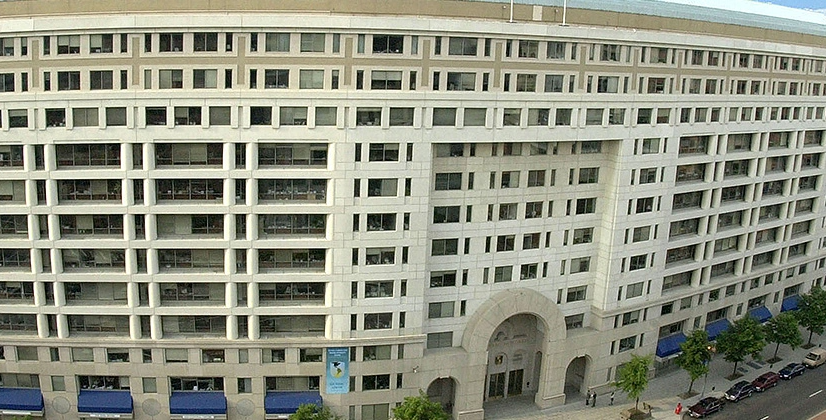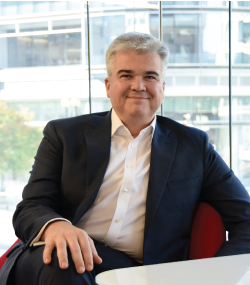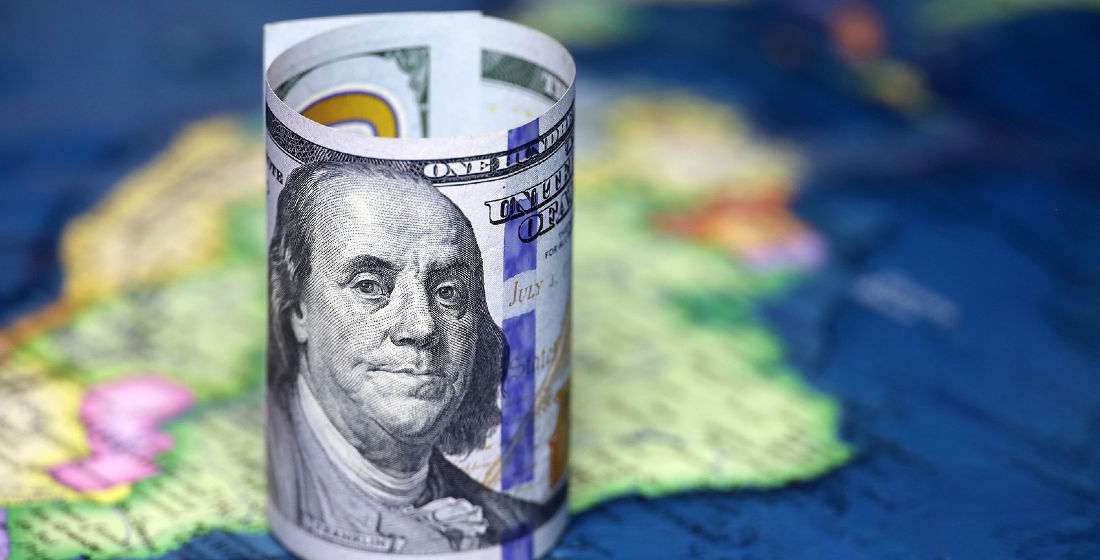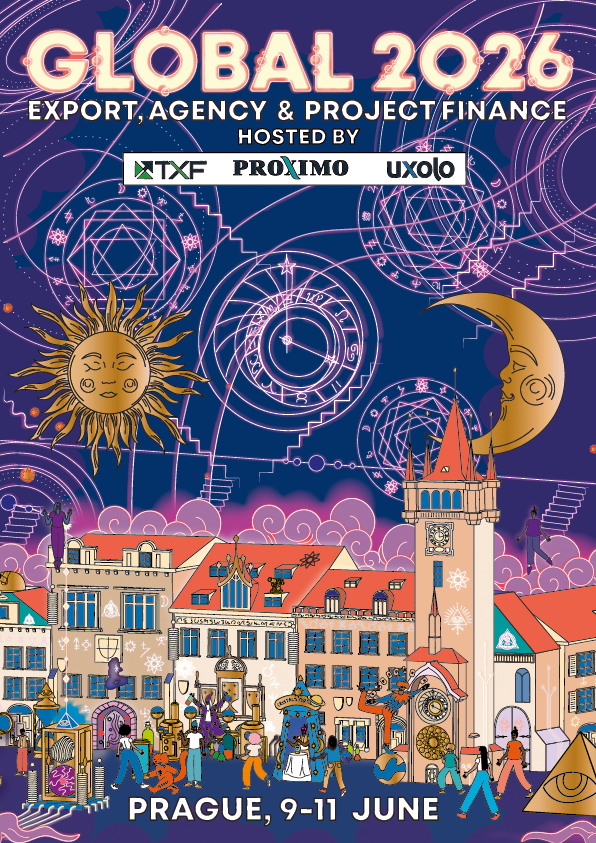IDB Invest’s Ferreira commits to sustainable funding
IDB Invest has committed to an ambitious 40% target of ‘climate and green finance’ by 2025. Orlando Ferreira, the bank’s CFO, says that what that means in practical terms for a multilateral bank that is active in 26 countries in Latin America and the Caribbean (LAC) is becoming clearer.

“If we’re demanding high [sustainability] standards from our clients then we have to apply those same standards to ourselves. We have to walk the walk,” says Orlando Ferreira, chief finance officer of IDB Invest, just ahead of the publication of the organisation’s landmark 2022 Sustainable Bond Program Report, which was published on 19 September.
“[The report] is unique in that it covers the whole range of sustainable bond issuance – not just green bonds. We’ve done blue bonds, social bonds – we’ve the covered the whole range of sustainable targets and objectives and this report is the first you will see coming out of multilateral that covers the whole range,” he says.
The report is the latest step of IDB Invest’s sustainability strategy that really kicked off in 2020 when the organisation adopted a debt sustainability framework for all its funding activities. In 2021 the multilateral bank issued $1.6 billion in sustainable debt – some of it very specific and targeted in nature, such as April’s A$50 million blue bond for a project that cleans and preserves – the first such blue bond in its region (Latin America and Caribbean or LAC).
There were other smaller green bonds, but the framework is really useful for the larger transactions – such as the $1 billion ‘sustainable’ bond that IDB Invest sold in February 2021.
Converting the borrowing programme
“Not only have we converted our whole borrowing programme into green and social bonds but we’ve also taken the following step to convey to the market in a transparent way that they now have a one-stop-shop to see what happened with the resources that our investors provide,” Ferreira tells Uxolo.
The $1 billion bond generated the funds to finance a portfolio of projects, including social projects with the target of ‘Socioeconomic Advancement and Empowerment’ ($799 million) and ‘Employment Generation’ ($257 million). With green bonds KPIs can be clear-cut – performance can be linked to emission reduction targets for example – but with broader social aims how does the bank quantify the “sustainability” angle? After all, isn’t everything a development bank does supposed to advance society and generate jobs?
“That’s the importance of this report – because it closes the loop,” says Ferreira. “With the blue bond, it’s simple. But it’s the same thing at a larger scale – it’s a question of how do we originate [projects] in the future to be able to meet our sustainability targets. Because if we didn’t have the report, then it’s fake – the cycle wouldn’t be complete. At the end of the day I have to tell the market exactly what I did with the billion dollars.”

Orlando Ferreira: CFO IDB Invest
Essentially, it’s IDB Invest’s means of validating the broader sustainability ambitions that it lays out during its transaction marketing events. And those roadshows have attracted a wider audience now that the bank has boosted its sustainability credentials: “It’s very clear that there are a number of investors that would not have bought our issuances had we not [adopted the sustainability framework,” he says. “There are clearly now pools of investors who are new to us because of the sustainability programme”.
However, beyond seeing greater demand – and higher oversubscription rates on recent deals – Ferreira argues it’s impossible to determine a specific pricing benefit, or 'greenium'. “There are too many variables that go into pricing bonds – the more variables we have the more equations you need to solve it,” he says. “But I can say with substantial confidence that our investor pool has broadened.”
Perhaps unsurprisingly given the relative maturity of ESG investing in Europe, IDB Invest’s 2011 investor based skewed to that region: 41% came from EMEA, while 41% were in APCA and just 15% from North America (despite 68.2% of the funding being in USD, with 23.5% in AUD and 7.63% in Mexican Peso). Meanwhile central banks were the largest type of investor (53%), with asset managers (28%), bank treasury (8%), insurance company (6%) and others (5%) comprising the total distribution.
Ferreira also argues that the bank’s internal structure – the report is the combined result of both finance and strategy departments – adds checks and balances to his funding strategy. “We have two departments that work independently from each other: one looks at originating resources and the other at where those resources end up,” he says. “These are the two main characteristics of the report – it covers the finance point of view but also the environmental impact, the sustainable impact and the development impact. It’s very transparent."
In this respect IDB Invest is building on its Green Bond Transparency Platform (GBTP),that it launched in association with its sister organisation the IDB in April 2021. The GBTP is a digital tool that aims to support the harmonisation and standardisation of green bond reporting. The aim of the tool is the same as this report – enhance investors’ confidence that the proceeds from bond issuance are transparently being spent on projects whose impacts are adequately measured. Blockchain technology facilitates the secure data reporting in the GBTP.
Meanwhile, IDB Invest’s sustainability debt framework is not 100% retrospective – the bank can’t just fill in the gaps in the coming years by updating annual reports. For example, all funds need to be invested within 24 months – a task made easier for the 2021 $1 billion transaction given that 72% of those funds was used to refinance exiting projects and 28% to new projects.
“The good thing is that the more that we issue [in terms of sustainability bonds] the more funds we have to reorient those resources and the more it impacts our overall portfolio. There’s a virtuous cycle by committing to this in an ongoing way,” he says. “And we’re also looking at other aspects of our balance sheet because, if you look at our assets, we essentially have borrowing and capital. But if you look at our assets we also have a liquid portfolio and we are now very actively working to make sure that by 2024 or 2025 the liquidity portfolio is also invested 100% sustainably. We’re not there yet, but that’s the next step.”
Currencies
While IDB Invest’s 2021 A$ financing helped build the issuer’s attraction to APAC investors – and is a sign of IDB Invest’s flexible and imaginative debt strategy – it is arguably the Mexican currency bond that is more significant.
One of Ferreira’s key objectives is to build local currency markets in Latin America and the 2021 $121 million-equivalent social bond, which was the first gender bond issued by a multilateral bank in Mexico, is an example of this initiative. Mexico is widely regarded as being the country with the most advanced local capital markets regulation in this area – and therefore largest investor base and deal flow. IDB Invest has been active in Mexico since 2011 (and coincidentally just issued another MXP2.5 billion social bond on 2 September this year).
But Ferreira is clear that that the bank is building capacity to do similar green and social issuance in other Latin American jurisdictions. “In Mexico we issue a bond and we keep [the funds in] the local treasury and disperse projects as they become active – and we now have that ability to do that in Brazil and Colombia. But in other countries we can do local funding on a one-to-one basis. So if there’s a deal we issue a matched bond and we fund the specific project – but yes, we have been looking to local markets.”
Does Ferreira expect to issue local currency bonds in Brazil and Colombia in the coming year? “It’s an option – we expect to be active in those markets in the future but we haven’t fully defined our strategy for next year,” he responds. “But let’s say that we’ve opened the potential for those two markets. We’ve also issued local currency bonds in Paraguay and Peru in the past and so they are also markets that are open to us.”
Ferreira also points out that, in terms of local currency financing, issuing local market bonds is just one option open to the bank, albeit the most obvious. “We essentially have three tools open to use for deploying local currency financing. One is bond issuance, for sure. But we have also been very active in the derivatives market – where that is possible. And we also work with credit lines in the local financial sectors, especially in the smaller countries. We can borrow more cheaply [than the sponsor] and then lend on to corporates in that specific country – so local currency finance is a multi-track process.”
One of the bank’s local currency financings in Paraguay is a good example of this multi-pronged approach: IDB Invest lent to a Paraguayan financial institution in dollars but lend to the ultimate client in guaranis. “If clients say dollar debt isn’t ideal we can work out how to deliver local currency – and that’s also true for tenor and other aspects of the deal. But local financing is certainly one of the items we look at really closely,” he says.
The flexible approach is intended to help clients implement projects while leveraging the financing capacity of IDB Invest’s private sector partners. Whether it’s through financing directly, or bringing in local banks or deploying corporates in the region to financing the ultimate client through supply chain finance (in the case of the smaller projects), “we don’t go direct to the smaller companies on our own – but what we want, at the end of day, is the impact. If we see a deal that has the capacity to have a demonstrable outcome then we work with other lenders in that country to make that a viable investment. That’s also part of our core mandate.”
The bank’s increasing focus on advisory also has a non-quantifiable positive impact on financing local companies. Even if IDB Invest isn’t involved in financing specific projects it still works with companies to improve their corporate governance and/or project finance proposals to enable many deals to attract other sources of capital. “We work with clients to improve their environmental and social action plans, or their corporate governance – especially family owned companies,” says Ferreira.
And it’s not just money – IDB Invest is increasingly acting as guarantor and advisor to leverage its experience and presence in these markets to get private sector capital flowing into the region. “We want to get resources to the region and we have gradually grown our mobilization capacity to the point of one-to-one,” says Ferreira. “So if we’re providing $4 billion to the region then another $4 billion [of private sector] money will go hand-in-hand. We have 190 different private sector partners – and that includes financial institutions in Europe and we certainly co-finance with financial institutions within the [LAC] region.”
Ultimately, Ferreira argues that despite its private sector mandate (the bank cannot lend with sovereign guarantees) IDB Invest is no different from other DFIs. “We have the full set of tools – so we can do guarantees, we can do equity investments, we can do lending,” he says. “We collaborate with other DFIs in many ways. For example, we could go together with the IFC to a project if that solves the client’s issues – and we can do that with the IFC because it shares our regional mandate. And not just the IFC, but the Andean Development Bank and CAF. Mobilization – partnering with DFIs and private sector partners – is a big part of what we do.”





